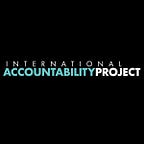Breathing in the Poison
Can these damaging effects stop future coal plants from ever being proposed?
By Kate Hoshour and Preksha Kumar
“There are two reasons for our visit to India. The first is to find out the facts about these issues that we are dealing with and the second is to inform people about our struggles. So we can unify.”
In Northwest Bangladesh, a proposed open-pit coal mine and coal-fired power plant threatens to destroy the homes, lives, and livelihoods of tens of thousands of people.
The Phulbari Coal project would displace some 130,000 people, including entire villages of indigenous people. It would also destroy 14,660 acres of land and threaten access to water for some 220,000 people. Communities in the region have been fighting since 2006 to stop the project. Between October 23rd -31st 2013, eight activists and community leaders, who have been at the forefront of this fight traveled across the border to India to join hand with activists there to challenge destructive energy projects.
For delegates from Bangladesh, the exchange also opened up a powerful window of deeper understanding about the threats their communities face. There is currently no open-pit coal mine anywhere in Bangladesh and only one 250 MW coal-fired power plant. But there are many destructive coal-based projects just across the border in India.
The Girl in the Smoke
The delegation first visited communities in Jharia, Jharkhand, where underground coal fires have raged for nearly 100 years. One delegation member recalled his first day in the village.
“The weather was chilly and plumes of poisonous smoke were rising from the ground. Suddenly, I noticed a young girl, not much older than six or seven, carrying a small child and standing in those toxic fumes.”
“Later I realised that she was standing there because she has very little clothing and was feeling cold. So to get some heat she was standing in the middle of all that smoke. The poisonous world around her is all she has ever seen and she has no way out.”
Such scenes were not at all uncommon. In villages in Madhya Pradesh and Uttar Pradesh, the delegation heard anguishing accounts of human rights violations suffered by people who had been displaced as many as five times by coal projects. Homes were destroyed when existing mines expanded. The land was no longer productive after being repeatedly contaminated by the toxic runoff from massive coal overburdens. Rivers and wells became poisonous and people were unable to protect themselves and their children from neurological damage, respiratory disease, tumors, and all the health impacts familiar in communities exposed to known carcinogens released in every stage of the coal life cycle. Delegation members learned that coal companies offered false promises for alternate livelihoods and jobs, eventually leaving the community landless, jobless, hungry and desperate. People were jailed, tortured, and even “disappeared” when they dared to demand what they were promised.
“We have been thrown off our land, our homes, our society, our culture. What more do you want to remove? Us from this earth? Many people have already been removed.”— Resident from Jharkhand speaking at a solidarity meeting.
With their homes, environments and livelihoods at stake, delegation members returned to Bangladesh with a deeper understanding of the threats the Phulbari Coal Project poses to their communities, and were fiercely determined to share what they had witnessed to ensure that communities have the knowledge they need to fight for their rights.
“We want to go back with these memories and share them with the people of Phulbari and discuss these hardships. We want to create awareness amongst them and turn sadness into strength. ”
IAP is an international NGO that works for a world in which all people can shape the decisions that affect their homes, environment and communities.
